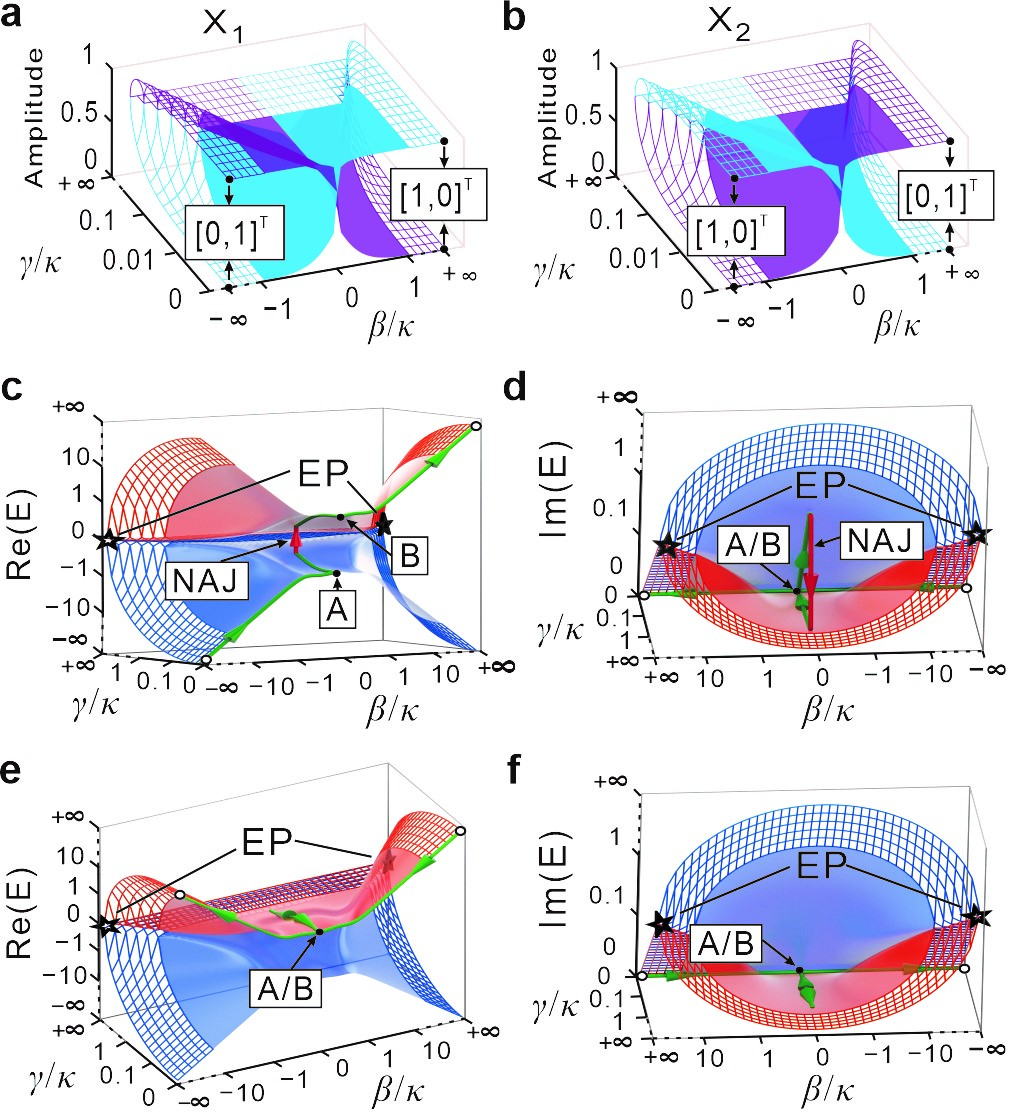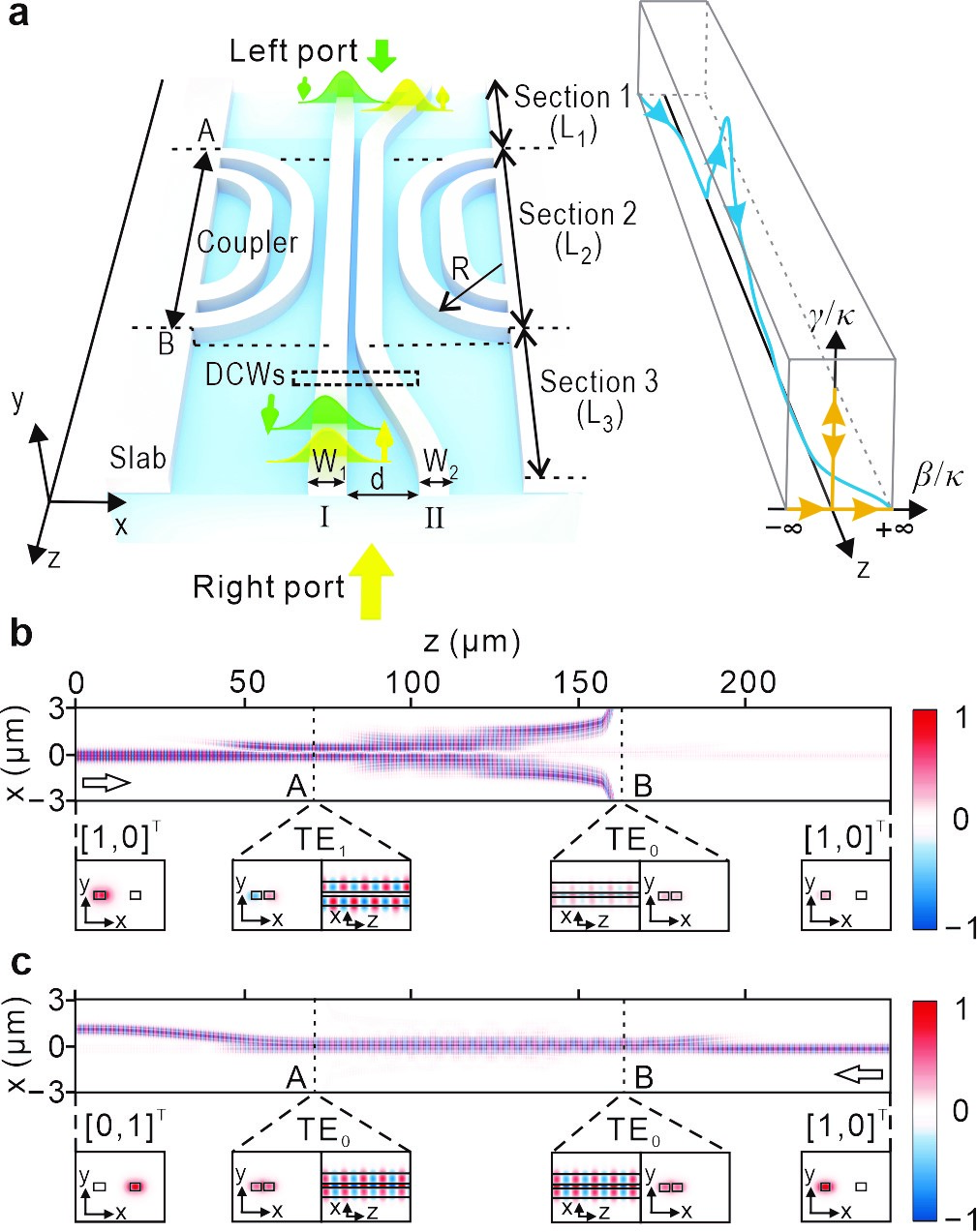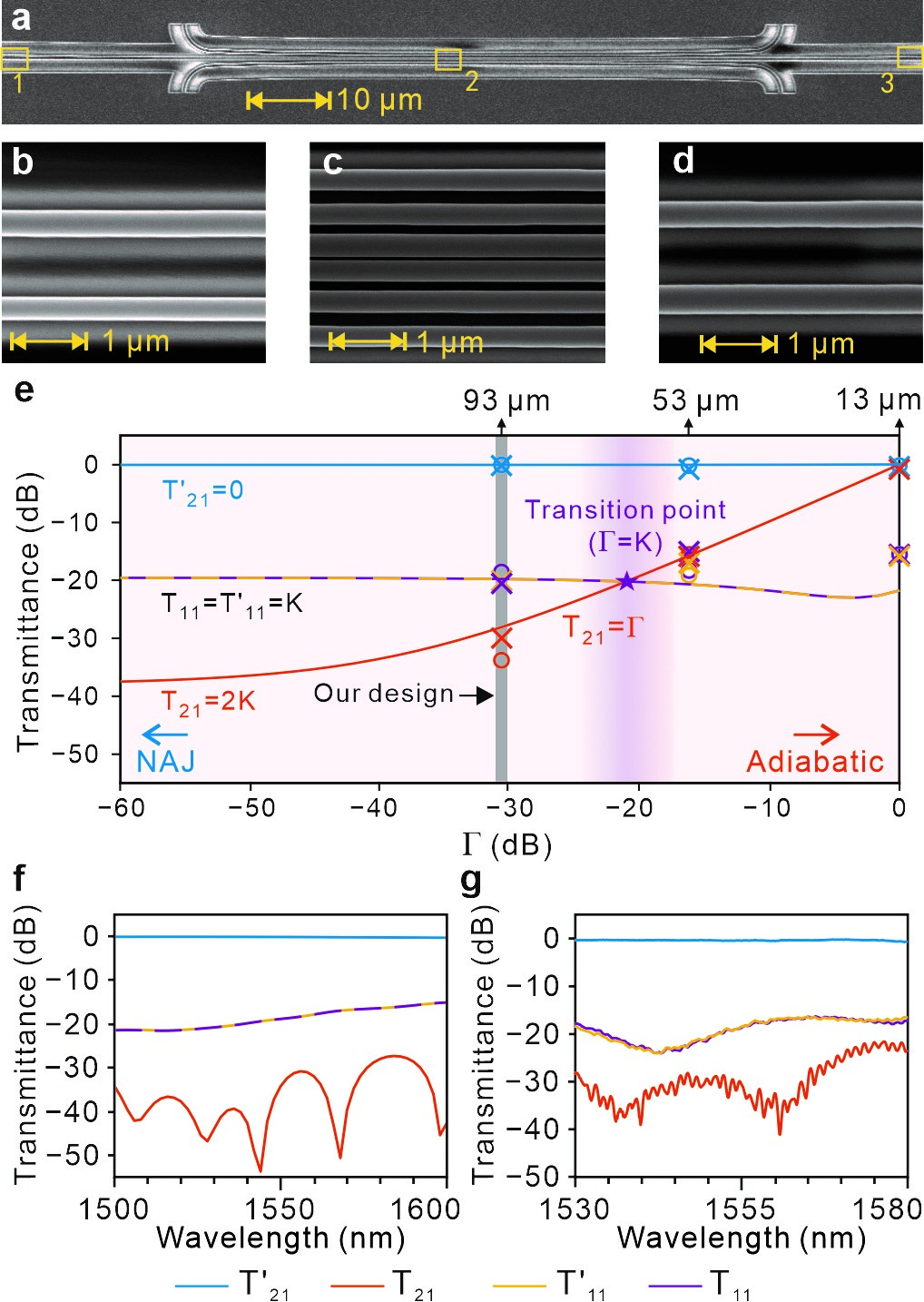Recently, Professors Jian Wang and Lin Chen's research team from Wuhan National Laboratory for Optoelectronics, Huazhong University of Science and Technology, together with Professor Demetrios N. Christodoulides' team from the University of Central Florida, have published a paper titled Chiral transmission by an open evolution trajectory in a non-Hermitian system in Light: Science and Applications.
When eigenvalues and eigenstates coalesce simultaneously in (anti-) parity-time (PT) symmetric systems, an exceptional point (EP) occurs. In the corresponding Hamiltonian parameter space, when the EP is encircled dynamically by the trajectory of varying parameters, the conversation between input and output states is asymmetric owning to the topology of EPs. It is the encircling direction but not the input state that determines the output, and the output state differs in the opposite directions. PT-symmetric systems and closed trajectories are usually necessary for the asymmetric conversation between symmetric and asymmetric modes in the previous works. The asymmetric conversation of symmetry-broken modes is achieved in anti-PT-symmetric systems with an efficiency of only 4%, far from practical applications.
This work goes beyond the previous closed EP encirclement. Two infinite points are found to share the same eigenstates in Hamiltonian parameter space, namely, asymptotic modes with optical field localized in a single waveguide. Hence, an open evolution trajectory linking these two points may contribute to the conversation of the asymptotic modes (Figure 1). Non-adiabatic jump is introduced by selective loss to a certain eigenstate for asymmetric conversation. So, an adiabatic coupler is used to consume the energy of even mode in a double coupled waveguide system (Figure 2). Simulated and experimental results demonstrate that the conversation gradually changes from symmetric to asymmetric as the introduced loss from the adiabatic coupler increases, and the conversation efficiency is always near unity (Figure 3).

Figure 1. Asymptotic eigenmodes and system states evolving on the Riemann surfaces. (a, b) Normalized eigenstates in parameter space. (c, d) Forward and (e, f) backward evolution trajectories in the Riemann surfaces.

Figure 2. Double coupled waveguides for demonstrating chiral transmission of asymptotic modes. (a) The structure of double coupled waveguides.
(b, c) Simulated field distribution when the light is injected into port Ι from the left side and from the right side at 1550 nm.

Figure 3. Experimental demonstration of chiral transmission. (a-d) SEM image of the device. (e) Theoretical, simulated and experimental transmittance versus different losses at 1550 nm.
(f, g) Simulated and experimental transmittance spectra for the output ports over the wavelength range of 1500–1600 nm and 1530–1580 nm, respectively.
This work is supported by National Natural Science Foundation of China, National Key Research and Development Project of China, Science, Technology and Innovation Commission of Shenzhen Municipality. The work of D.N.C. was partially supported by AFOSR MURI.
Link: https://www.nature.com/articles/s41377-024-01409-1